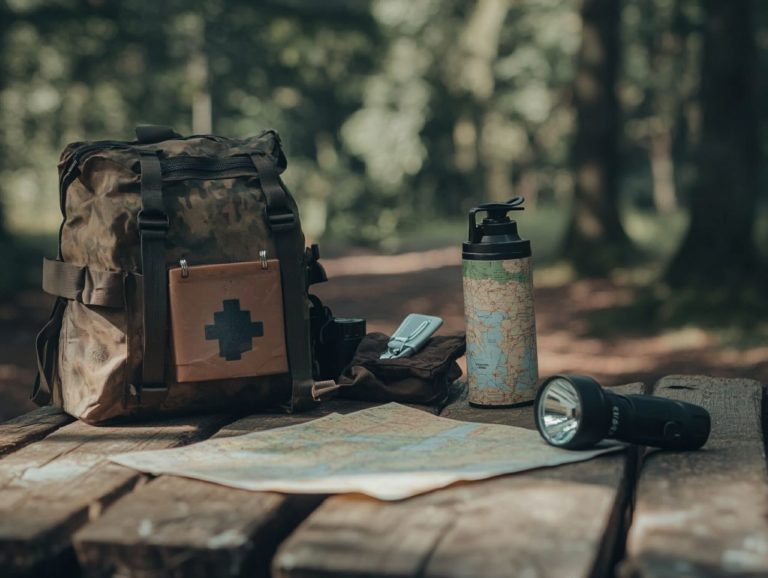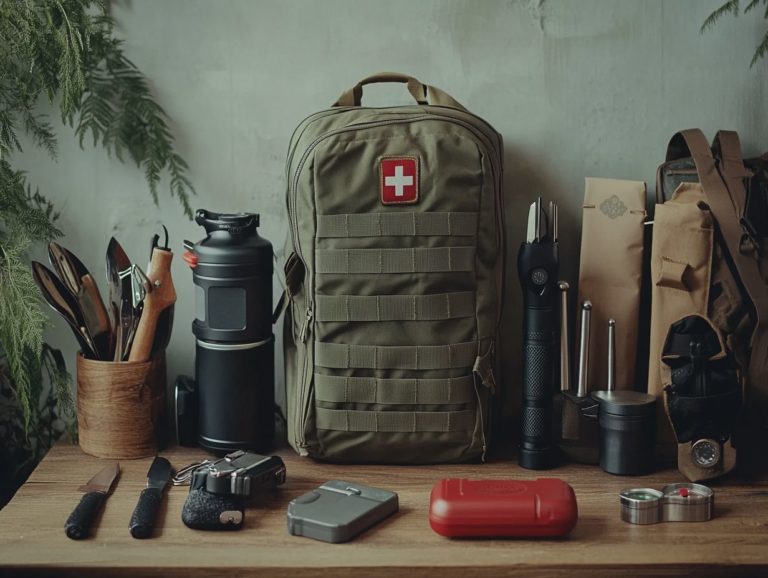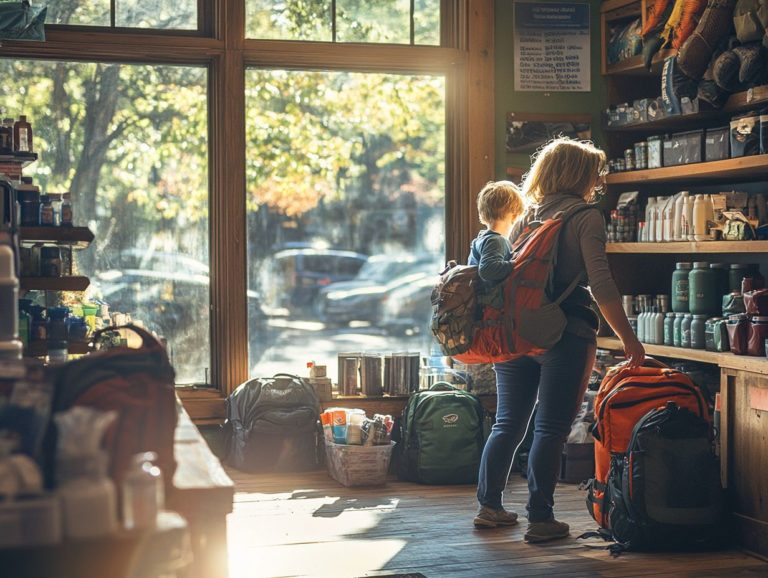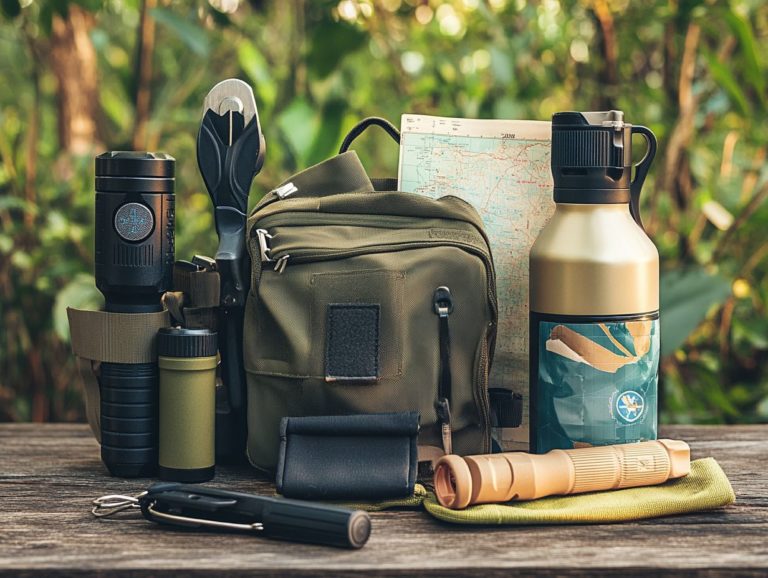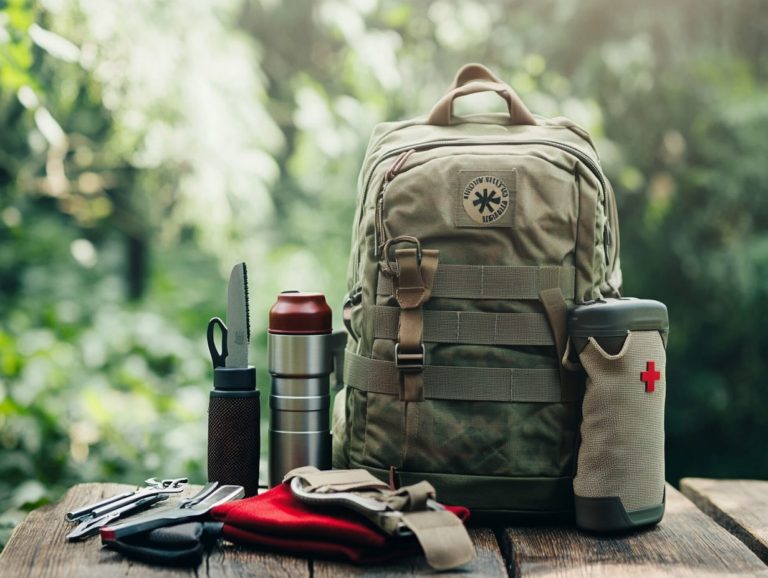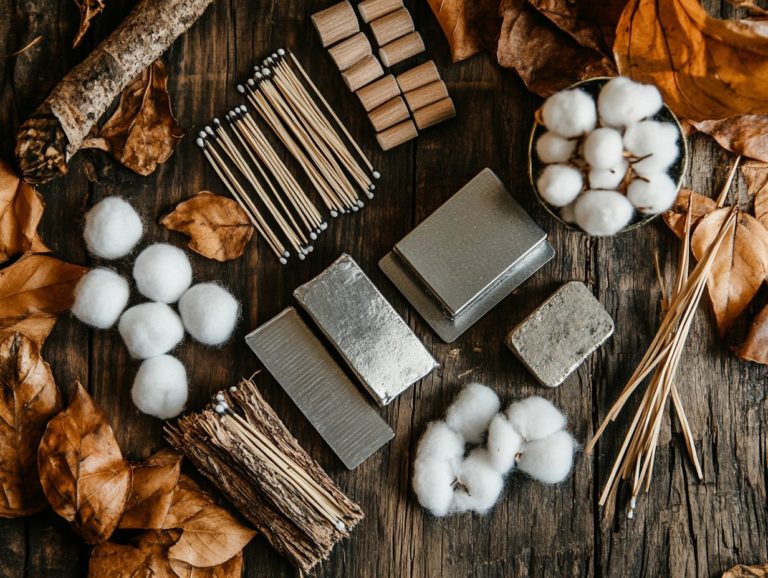Best Practices for Using Survival Gear
Survival gear can truly be very helpful in emergencies, providing you with the essential tools and equipment needed to navigate unforeseen challenges.
Let s explore the essential survival gear that can keep you safe and prepared! This article covers must-have items in a kit, tips for selecting the right tools based on your unique environment, and the proper use and maintenance of your gear to ensure its longevity. It also recommends equipment tailored to various terrains and emphasizes the importance of training and preparation.
Equip yourself with the knowledge necessary to stay safe and prepared, regardless of what life throws your way.
Contents
- Key Takeaways:
- Essential Items in a Survival Kit
- Choosing the Right Gear for Your Needs
- Proper Use and Maintenance of Survival Gear
- Survival Gear for Different Environments
- Recommended Gear for Different Terrains and Climates
- Training and Preparation for Using Survival Gear
- Preparing for Emergencies and Practicing Survival Techniques
- Frequently Asked Questions
- What are the top 5 essential survival gear items to have?
- Should I have multiple types of survival gear for different situations?
- Is it necessary to pack lightweight survival gear?
- What should I consider when choosing a survival knife?
- How often should I replace my survival gear?
- Can I customize my survival gear to fit my specific needs?
Key Takeaways:
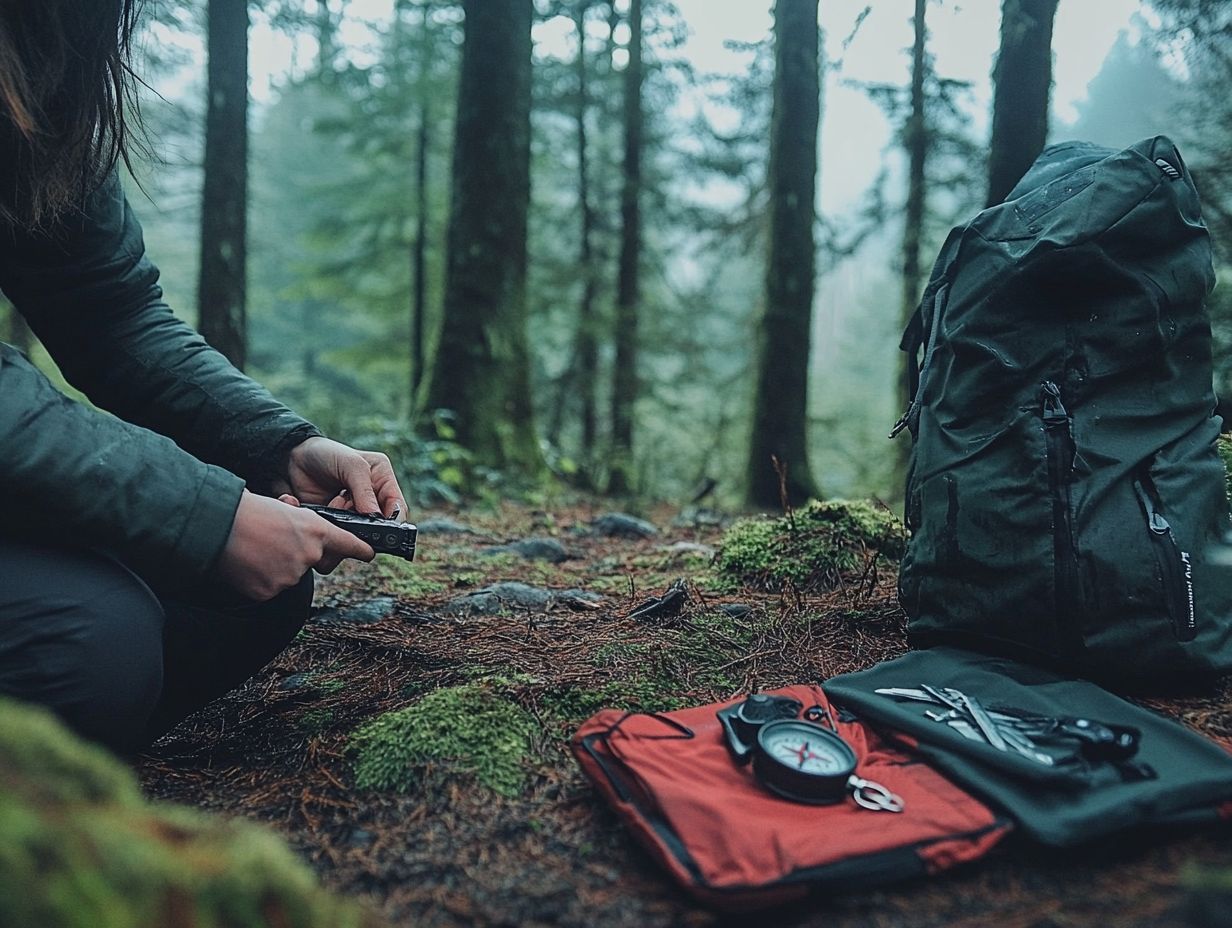
- Always have essential items in your survival kit, such as a first aid kit, shelter, and water filtration tools.
- Select the right survival gear for your environment now!
- Proper training and preparation are crucial for effectively using survival gear in emergencies. Practice different techniques and familiarize yourself with your gear beforehand.
Understanding Survival Gear: What You Need to Know
Survival gear includes the essential tools and equipment you need to navigate wilderness situations, ensuring your safety and ability to recover when emergencies strike. This gear ranges from basic survival kits to specialized items like fixed-blade knives durable knives with a blade that does not fold fire starters, and medical supplies tailored to address various survival priorities and scenarios. Understanding what makes effective survival gear is critical for anyone planning outdoor adventures or seeking to boost their survival training.
For those who take emergency preparation seriously, a well-rounded survival kit might feature:
- Multi-tools for versatility.
- Compact water purification systems.
- Portable food rations to keep your energy up.
Items like signal mirrors and personal location devices can be invaluable for rescue efforts.
Learn essential survival skills like building a shelter and crafting rope. These skills will enhance your ability to use your gear effectively. Coupled with a survival mindset an adaptable, resilient attitude you’ll significantly improve your ability to thrive in unforeseen situations.
Ultimately, the integration of gear, skills, and mindset forms a solid foundation for any adventurer ready to embrace the wild.
Essential Items in a Survival Kit
A meticulously prepared survival kit is an invaluable asset, brimming with essential items that safeguard your well-being in challenging circumstances. Pack your survival kit wisely it s crucial for staying safe in emergencies!
Within the confines of such a kit, you’ll find crucial tools: a reliable water bottle, water purification tablets, a comprehensive first aid kit, and rugged equipment like a folding knife and a reliable fire starter.
Must-Have Gear for Any Situation
Regardless of the wilderness environment, certain essential survival gear is crucial for effectively addressing various emergencies and situations. You should have a fixed-blade knife for all your cutting needs, fire-starting tools like magnesium blocks, and a reliable compass to keep your navigation on point.
- Fixed-blade knife for cutting needs.
- Fire-starting tools like magnesium blocks.
- Reliable compass for navigation.
Incorporating a durable multitool can greatly enhance your versatility, allowing you to tackle a range of tasks from repairing gear to preparing meals. Water purification systems are equally vital, ensuring you have safe drinking options in the wild, which is essential for maintaining hydration and overall health.
Together, these tools not only improve your practical survival skills but also foster a resilient mindset, preparing you to confront challenges head-on and adapt to unforeseen circumstances. By equipping yourself with these critical items, you cultivate confidence and a sense of control over your environment.
Now is the time to prepare your survival kit and check your gear!
Choosing the Right Gear for Your Needs
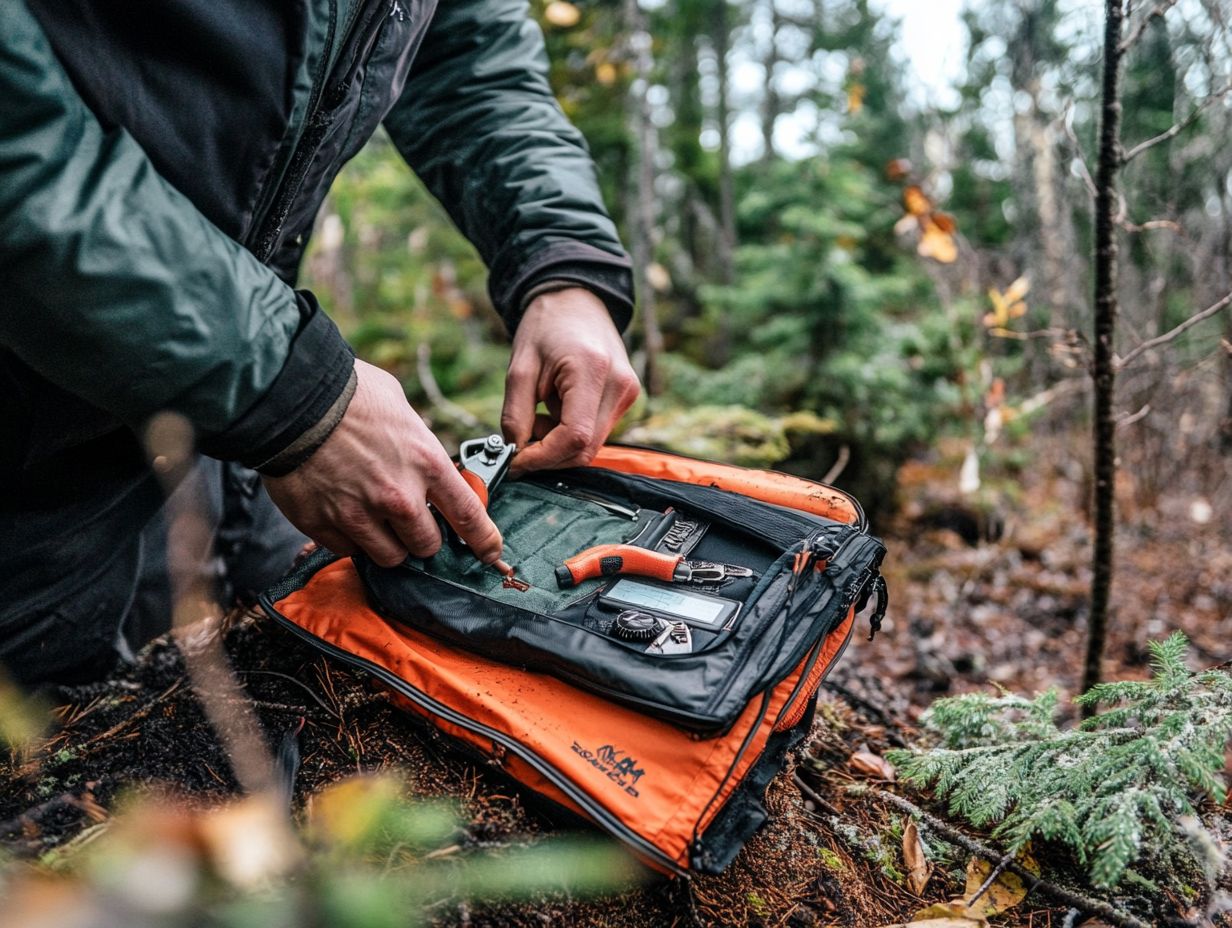
Selecting the right survival gear is crucial for your success in the wilderness. It’s important to tailor your choices to your unique needs and the specific environment you’ll encounter.
As you evaluate your priorities whether for a day hike or an extended survival training session, consider strategies that align with your situation. Pay attention to factors such as climate, terrain, and your own skill set. To make informed decisions, refer to this guide on how to choose the right survival gear for you. These will significantly influence your gear choices, ensuring you are optimally prepared for challenges.
Assessing Your Environment and Situation
Assessing your environment and current survival situation is vital for determining the right gear. Factors like weather conditions, terrain characteristics, and available resources influence your survival techniques and strategies.
By grasping these elements, you can better prepare for potential challenges outdoors. For instance, in a cold climate, frostbite is a serious threat. This makes insulated clothing and proper shelter materials essential.
In a humid environment, prioritizing ventilation and waterproof gear is crucial. This helps reduce the risk of a dangerous drop in body temperature and fungal infections.
Evaluating the availability of natural resources, like fresh water and edible plants, enables you to optimize your nutrition and hydration strategies. These assessments guide your gear selection and shape how you adapt your survival skills.
Proper Use and Maintenance of Survival Gear
The proper use and maintenance of your survival gear are crucial for ensuring its longevity and effectiveness. Understand how to utilize each item from fire-starters to medical gear.
Keeping equipment like folding knives and compasses in peak condition is essential. This attention to detail is vital for performance during emergencies.
A well-maintained kit enhances your survival capabilities and instills confidence in your preparedness.
Tips and Tricks for Longevity and Effectiveness
To maximize the longevity and effectiveness of your survival gear, implementing practical tips is essential. Regular maintenance, such as inspecting your fire-starting tools, can significantly enhance performance during emergencies.
Check that your water purification tablets haven t expired. Proper storage of your durable equipment is equally important to extend its usable life.
Regularly check the sharpness and condition of your knives. A dull blade can hinder tasks and turn minor situations into frustrating challenges.
For camping gear like tents and sleeping bags, ensure that zippers work smoothly and there are no tears. These imperfections can compromise your shelter and comfort.
Keep the cables and connectors for your electronic devices clean and free from corrosion. Check your first-aid supplies regularly to ensure you’re ready for medical emergencies.
By adopting these habits, you enhance the reliability of your survival gear. For more tips, learn how to use hiking gear for survival. Make sure to check your gear before heading out into the wild!
Survival Gear for Different Environments
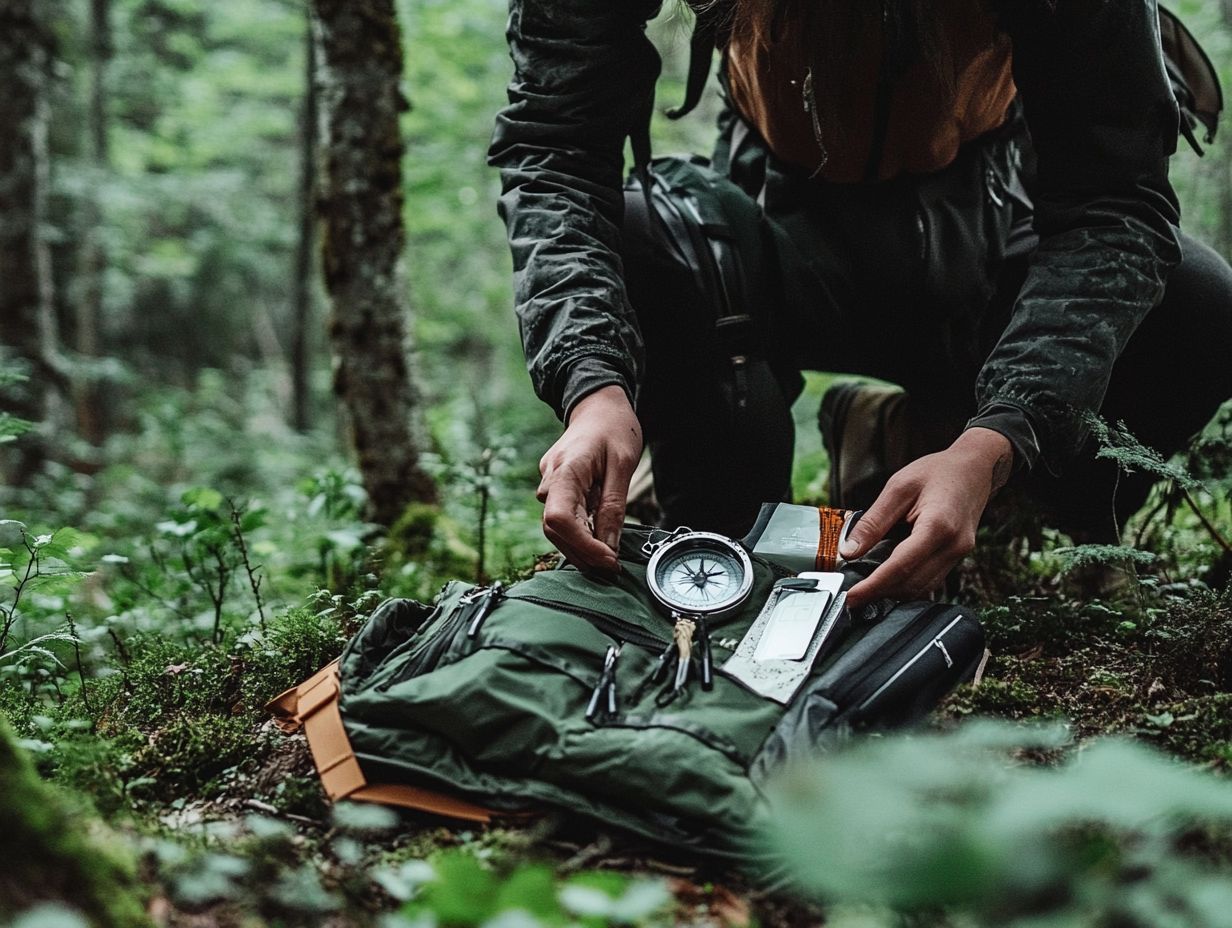
Different environments necessitate specialized survival gear. Each presents distinct challenges and demands specific strategies.
For example, the equipment required for a desert setting can be vastly different from what s suitable for forested areas or mountainous terrains. Understanding these differences is essential for making informed gear choices.
This ensures you re fully prepared for any wilderness scenario that comes your way. Get ready for adventure!
Recommended Gear for Different Terrains and Climates
When you set out to explore diverse terrains and climates, selecting the right survival gear is crucial for ensuring your safety and effectiveness in various situations.
For wet climates, waterproof bags for gear storage and fire-starting tools that function even in the rain become essential.
In colder environments, insulated clothing and a reliable water bottle are essential components of your survival toolkit.
In arid regions, lightweight, breathable clothing combined with a large water container keeps you comfortable and ensures you stay properly hydrated a key factor for survival.
When navigating rugged terrains, handy tools and durable trekking poles can aid in your journey, offering both support and assistance in challenging paths.
Choose the right gear to conquer any environment and boost your survival chances! The right equipment can significantly enhance your ability to thrive in any scenario.
Whether you need a solar-powered charger for sun-soaked areas or an emergency blanket and fire starter to shield against harsh winds, understanding the terrain and climate is essential for effective preparation.
Training and Preparation for Using Survival Gear
Effective training and preparation for using survival gear are essential for ensuring your readiness in any wilderness survival situation.
Participating in a wilderness survival class equips you with practical insights into utilizing essential items like fire-starters, compasses, and first aid kits, while honing critical survival skills and techniques.
This level of preparation gives you the power to respond with confidence and effectiveness in emergencies.
Preparing for Emergencies and Practicing Survival Techniques
Preparing for emergencies entails selecting the right survival gear and actively honing your survival techniques for potential crises.
Regular drills and simulations sharpen your skills, ensuring you can effectively use essential items like your first aid kit and signaling devices when it truly matters.
This proactive strategy helps build a survival mindset and boosts your confidence in your abilities.
Engaging in realistic scenarios allows you to anticipate challenges and react swiftly under pressure.
Consider incorporating a variety of situations into your practice routines, such as navigating different terrains or managing injuries, to deepen your understanding and responsiveness.
Collaborating with family or community members during these exercises enhances teamwork and communication two vital components in any emergency.
By immersing yourself in these practical exercises, you not only retain crucial knowledge but also help cultivate a resilient community ready to face unforeseen events together.
Frequently Asked Questions
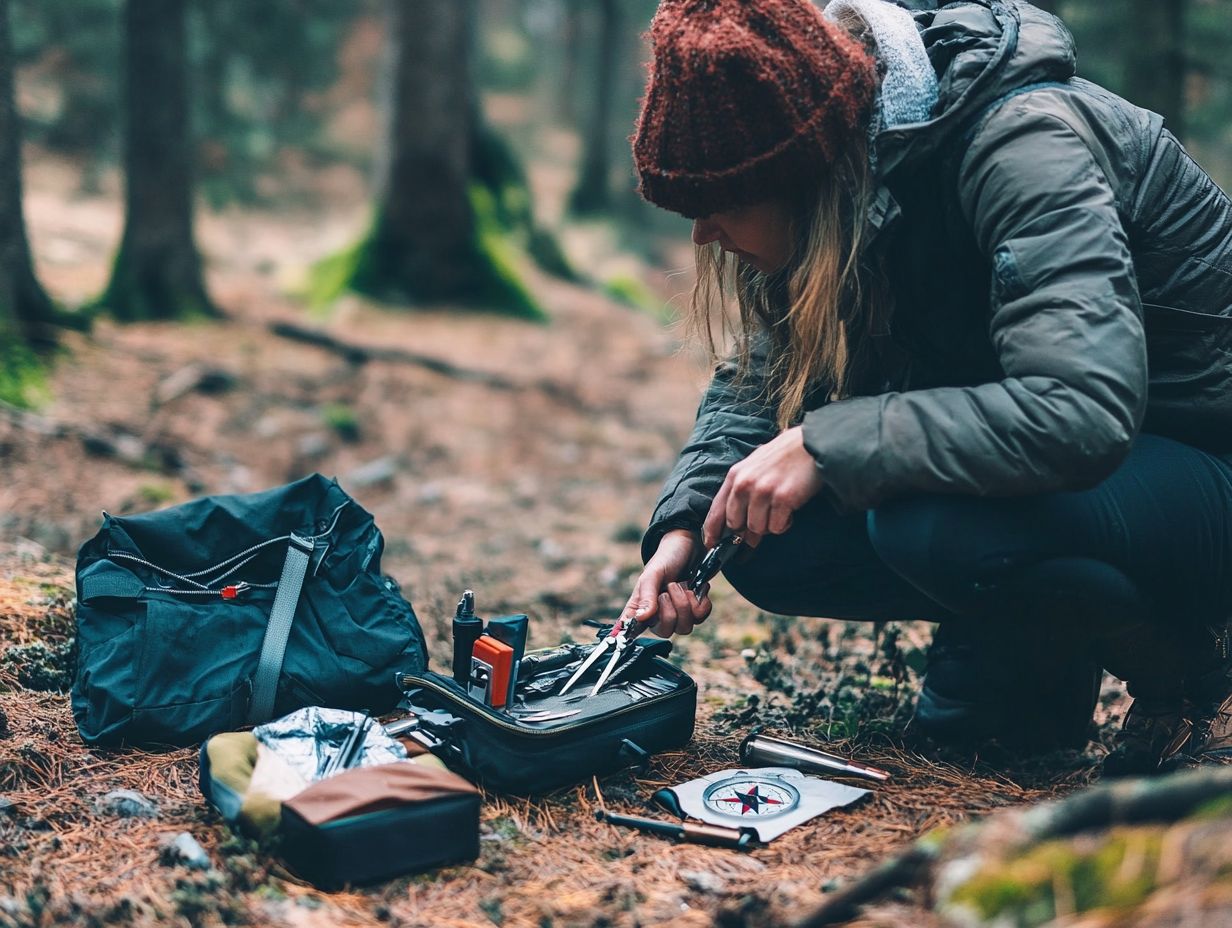
What are the top 5 essential survival gear items to have?
The top 5 essential survival gear items to have are a reliable knife, a water filtration system, a fire starter, a first aid kit, and a shelter such as a tent or tarp. These items will help you stay hydrated, fed, and protected in a survival situation.
Should I have multiple types of survival gear for different situations?
Yes, it is important to have a variety of survival gear for different situations. For example, you may need different types of shelter depending on the weather conditions, and having multiple fire starters can be helpful if one fails.
Is it necessary to pack lightweight survival gear?
Yes, it is important to pack lightweight survival gear as it will make it easier to carry and won’t weigh you down. Look for gear that is specifically designed to be lightweight and compact for easy transportation.
What should I consider when choosing a survival knife?
When choosing a survival knife, consider the blade length, type of blade material, handle grip, and overall durability. You want a knife that is versatile and can handle a variety of tasks, from cutting through tough materials to preparing food.
How often should I replace my survival gear?
It is important to regularly check and replace your survival gear to ensure it is in good working condition. Check for any wear and tear, and replace items that are no longer functioning properly. It is recommended to do this at least once a year.
Ready to gear up for your next adventure? Stay prepared for any situation!
Can I customize my survival gear to fit my specific needs?
Yes, you can customize your survival gear to match your needs. Consider adding tools like a compass, signaling devices, or a personal locator beacon a device that helps others find you.
Keep your gear lightweight to ensure you can move quickly and survive in any situation.

